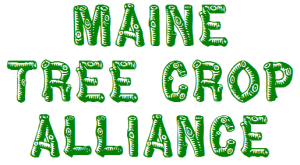COMPARTMENTALIZATION OF DECAY IN TREES. How trees respond internally to wdounds from mechanical damage, pests, and limb breakage. U.S. Forest Service, Agriculture Information Bulletin No. 405, July 1977 publication. If you’v ever seen a wound on a tree and wondered what it looks like inside the tree, this is where to look.
Round-headed Apple Tree Borer. Warnings about this insect and suggestions for finding and removing it from your apple trees.
A Field Guide to Tree Fruit Disorders, Pests, and Beneficials: A Cooperative Effort of the Pesticide Education Program and the Tree Fruit Team . At 94 pages, this is a pretty comprehensive guide for major tree fruit species. The photo selection can help ID problems. Mostly traditional chemical sprays are given as remedies to pests and diseases, with some advice directed at nutritional deficiencies. Mid Atlantic orientation of this Penn State Extension booklet covers many of the problems encountered in this region, though sadly. round headed apple borers are notably absent. (submitteed by Jack Kertesz)
Tick repellent substances in the essential oil of Tanacetum vulgare (Tansy) , Abstract from PubMed.gov , a website of the National Institutes of Health (NIH).
Borers Schmorers, Tree Fruit Boring Insects and Their Control A May-2017 blog from Ecosystem Insights and Know Your Roots , a biodynamic website out of Trumansburg, NY.
Eastern Filbert Blight (pdf). Cornell University’s Plant Clinic (Plant Disease Diagnostic Clinic ) fact sheet on EFB.
USA-NPN Pest Forecast . “The USA-NPN Pheno Forecasts can help you determine when insect pests and invasive species will reach life stages critical for monitoring and management in your region.”
Utah Pests Fact Sheets A master page of links to various types of pests in Utah by the Utah State University Extension. Includes info on diseases and beneficials. “The mother lode of extension publications that are very detailed. Not happy with the pesticide recommendations but the rest of the info and clear pictures could help.Some precautions advised where they are not North East observations.”—Jack Kertesz

